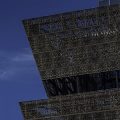A Bold Anthology Shows How R-I-G-H-T and W-R-I-T-E Come Together in Black Poetry
Poet and essayist Kevin Young discusses his new book, “African American Poetry,” and his new post at the Smithsonian
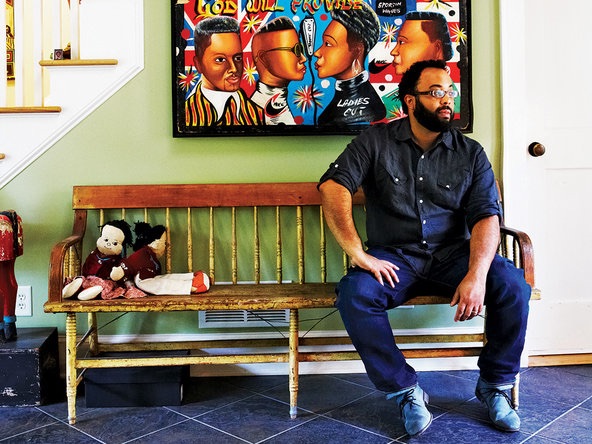
Black lives matter. This is not a statement for debate. For poet and essayist Kevin Young, who in January will become director of the Smithsonian’s National Museum of African American History and Culture, poets have been at the forefront of bringing this message to the world. Black literary traditions have long documented and fueled the matter of black life, the determination and right to survive unfettered and with joy.
In her formative essay “The Difficult Miracle of Black Poetry in America or, Something Like a Sonnet for Phillis Wheatley,” June Jordan tells us that the “miracle of Black poetry in America: is that we persist, published or not, loved or unloved: we persist.”
This too is the difficult miracle of blackness, that, as Young says, “we persist, we resist, we triumph, we celebrate, we stumble, we get back up.” June Jordan’s words serve as an impetus for Young’s new collection, African American Poetry: 250 Years of Struggle and Song, whose introduction, is aptly titled “The Difficult Miracle.”
Young emphasizes this unwavering persistence in his capacious anthology from Phillis Wheatley to Jamila Woods, across centuries of luminous verse. The extensive, but nowhere near exhaustive, collection offers spirited intergenerational conversations that reveal the testimony of poetry and allows readers to deepen connections with familiar writers and build an affinity for unfamiliar names and ever important messages of their work.
Can you speak to the urgency of this collection, and the rich history of black poetry?
Black poetry has been important for 250 years and that is really one of the points of the anthology, and why I hope it is a sweeping anthology, that starts with Phillis Wheatley and goes to the present… I really thought it was important to show that quarter millennium span of the tradition. One of good poetry’s fascinating qualities is that it is both timely and timeless.
I was giving a reading at an Atlanta-based event, and I read some of “On Imagination” by Wheatley and it just seems so relevant. She talks about being unbound—the imagination unbound, and that’s a metaphor, of course, but it’s also not a metaphor. It’s about the binding of slavery and enslavement that she was currently writing under. We are all seeking that unbounded quality, and that African American poetry has really paved the way, focusing on the imagination as a liberatory force but also on words and language and the music of the moment.
That moment is always now. “Now is the time” as Charlie Parker would say. Sometimes there’s that happenstance where something comes out right when it seems relevant. Now, it was never irrelevant. It’s just that in this current moment—I was struck even, editing and finishing writing the introduction. I finished on Juneteenth this year, which was really in the middle of the uprisings, the unrest, the rebellion, if you will, and in the wake of George Floyd’s murder and in the wake of other police killings and extrajudicial killings—I was struck by how poets are often first to talk about that.
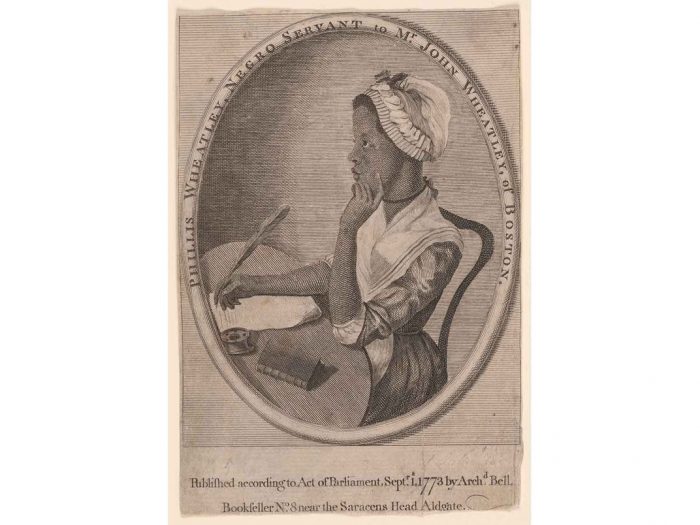
There is this tradition within the tradition of protest. A poem like “Southern Cop” by Sterling Brown seems incredibly relevant suddenly. It’s sophisticated in its tone it’s damning in its understatement. Then you have some poems of more recent vintage that take on these kinds of questions of Americanness and safety and justice in really profound ways, the tradition is really rich that way, and pointed.
One of the things [June Jordan] was able to write about is her rights—“Poem About My Rights,” the personal and political not as a divided thing, not one before the other but as this tumult she’s trying to understand. R-I-G-H-T and W-R-I-T-E, Jordan shows us, comes together in poetry.
The anthology is arranged by era, you say you do this to give an idea of “the steady march and percussive drum circle of poetry.” Talk about your vision for the structure and layout of the anthology.
I wanted the sections and arrangement to give a sense of what was there and when. It can get overwhelming when you have hundreds of poems and nearly 250 poets over a 250-year span. But I also learned a lot about who was writing around the same time. Obviously, someone like Langston Hughes—he published for 45 to 50 years, that’s part of the pleasure, too. The poem “Ask Your Mama,” part of his late masterpiece, fits alongside Black Arts and that renaissance then.
I hope [the sections] aren’t limiting, I do hope they make connections that you might not always see. That was especially important to represent within these traditions,… the other writers who were writing alongside Hughes, especially women writers—specifically in terms of the Harlem Renaissance. Many women were writing and publishing, but they weren’t always publishing books. There are many reasons, one of them sexism, as to why they weren’t publishing books, and you have to represent what was happening at the time.
“Poetry is about those lyric transcendent moments, and so is the museum, it reminds us what is possible.”
Kevin Young
incoming director of the National Museum of Natural History and Culture
At the same time, I really wanted to shift some people who we think of as Harlem Renaissance people, like Angelina Weld Grimké, who, was such an amazing poet, especially because she was writing love poems to another woman in the 1890s that she couldn’t publish then, or didn’t. While she did publish in the 1920s, it was probably one of her most prolific publishing times. She also published an important anti-lynching play as you know, Rachel. So how to categorize her? Just by putting her in the Harlem Renaissance you miss a little bit of her radicalness and how early it was, that she was writing these poems and writing these plays that really transform how we think about some of these things. And Rachel was her only published work in terms of a book.
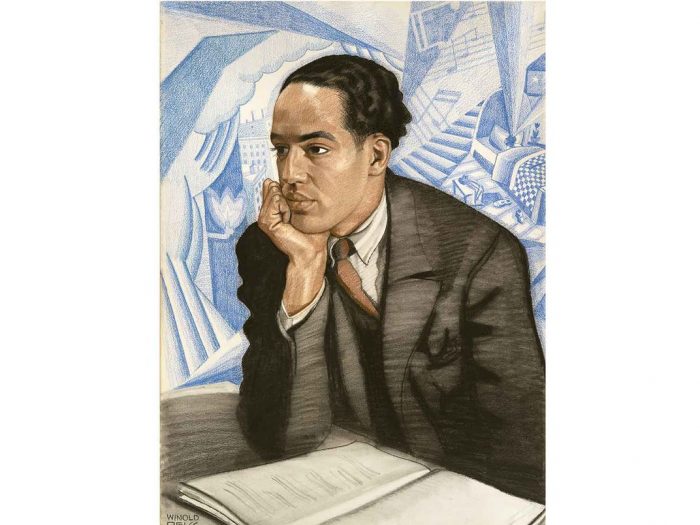
The collection’s sections feel like a kind of call and response. A contemporary poem echoes one from, say, the early 1900s— is this because we are still talking about some of the same issues?
For me, a lot of it was discovery or rediscovery and I want readers to have the same experience. At one point there was going to be introductions to each section and really placing you in time and space, but it started to get really distracting. I want people just to read and discover cross sections and make connections. Yesterday I was thumbing through and I stumbled across this poem by Lucian B. Watkins called “The New Negro,” and the first line is “He thinks in black.” That is some amazing stuff from a century ago. That could have been a line written yesterday, it could’ve been written in 1969. Watkins is trying to signal the “New Negro,” but he’s signaling this whole tradition that has grown up around this thinking, and thinking blackness, and thinking about blackness.
I’m struck over and over again about connections that I knew were there but that I see anew. To me the anthology while finished and closed, is also a kind of living thing and you can discover it in different ways. I hope that people come to poets that they admire and really learn. The first poem in the last section is by Hanif [Abdurraqib] it’s called “How Can Black People Write about Flowers at a Time Like This” that echoes Nikki Giovanni, “perhaps these aren’t poetic times at all” she says. In the poem “For Saundra,” she says, “so I thought/ i’ll write a beautiful green tree poem/ peeked from my window/ to check the image” and it’s really a question of, what are the topics of poetry? How can I write about this and not see that? Even by saying that and writing a beautiful poem you’ve kind of answered your question. At the same time these poets are questing for something more that is really special.
Two hundred and fifty years of struggle and song, the two are in this kind of dance. This “drum circle” if you will, and the thing about a circle is that anyone can join. Thinking black doesn’t equal one way of writing. The anthology proves that and I really wanted to include the diversity of black poetry and blackness as a whole. You get to see that talking to each other across time—Robert Hayden’s poems to Paul Laurence Dunbar or in the voice of Phillis Wheatley, or his poem to Frederick Douglass. These are really important poems that help me rethink earlier writers. He was always calling out historic figures and literary figures and it’s a long conversation. Sometimes it’s an argument, sometimes it’s a discussion, sometimes it’s quiet talk across centuries.
Why is being a poet significant as the new director of the Smithsonian’s National Museum of African American History and Culture?
The museum is such an important place in our nation and in our consciousness. It tells the stories of African American life and experiences as central to the American experiment. That is something I’ve been thinking through for a long time and writing about, also in my non-fiction, like the Grey Album for instance. One of the wonderful things about it is the chance to engage with people and meet them where they are. To bring people into the space, to see them go through that structure—I did with my son and it was so powerful to just rise up through the centuries. It doesn’t just describe the struggle and the song, it enacts it and that’s something a poem does. It doesn’t just talk about something, it brings you, places you, moves you, transports you into an experience. To me, being a poet running it makes a lot of sense, poetry is about those lyric transcendent moments and so is the museum, it reminds us what is possible. That’s an integral part of black culture, that high “C,” that low “E” Armstrong or Coltrane is hitting, that’s the reaching, the yearning that is running through the culture. I’m looking forward to articulating that and making that part of the vision but also part of everyday American life.
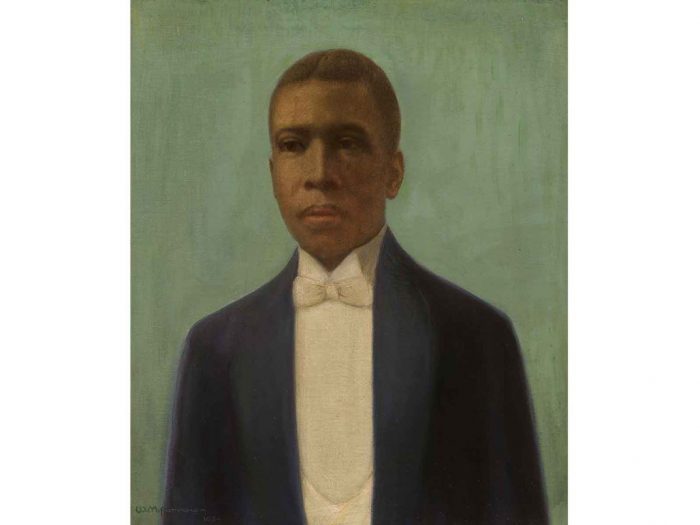
How do you envision influencing that space?
One of the things the museum does really well is that it puts you in contact with these artifacts of the past. They’re part of your present as you experience them, but it also helps you know that these things are constantly being discovered and gifted. I would call it almost an ecosystem of the museum and that the museum has brought this material together all under one roof.
Something like Harriet Tubman’s earliest known photo which I happened to see in the case, but I had happened to have handled before and seen. To see it in the museum was almost doubly exciting than being with it one-on-one because here it was for everyone to see and that gives me chills from thinking about it. It helps us know Tubman more, it helps us see her in a younger light and we can get to know her in a different way. The museum does this in such a public way but also in an intimate way at once and there is something poetic about that. Practically speaking the history it tells is so beautiful that it also gives us a chance to think about well, what’s the present, what’s the future?
I love exhibitions and think they can do so much to light a spark and start people thinking in ways and making connections. I’m looking forward to some of the exhibitions they have planned already and finding some more to bring to light. There’s such an opportunity in this current moment, in this current renaissance that predates all this unrest, that the museum will definitely capture.
I’m eager to get in there and see what’s next. Capable curators are already there, and they haven’t stopped this whole time working and working towards future shows. When I was there for instance there was a show on World War I, and just to go through that was really moving and to see aspects of which, I know a decent amount, but to see more—they had pieces on Black Wall Street and Tulsa. There’s a real powerful sense, even in those two examples of how you talk about black struggle and black resistance and the black past that sometimes gets buried. I’m really looking forward to digging in and talking about these connections.
Poet-scholar drea brown is currently an assistant professor of Literary and Cultural Studies at Bryant University in Smithfield, Rhode Island. drea is the author of dear girl: a reckoning, published by Gold Line Press in 2015.
This post was originally published by Smithsonian magazine. Copyright 2020 Smithsonian Institution. Reprinted with permission from Smithsonian Enterprises. All rights reserved. Reproduction in any medium is strictly prohibited without permission from Smithsonian Institution.
Posted: 18 November 2020
